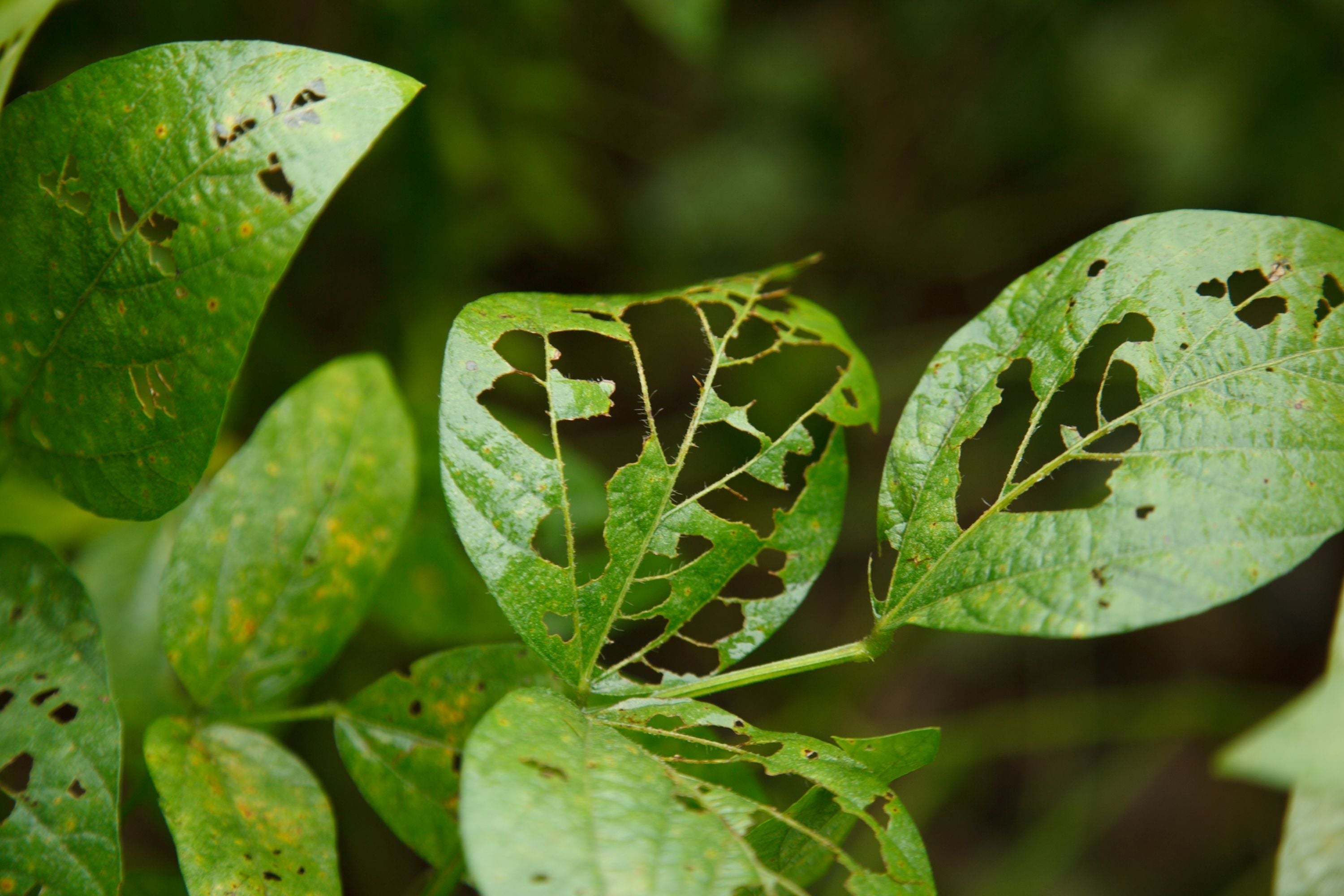
Garden Villains: The Most Common Bugs That Destroy Crops and Gardens in the U.S.
No matter how much care you give your garden or crops, there’s one constant threat that every grower faces: pests. These unwelcome visitors can chew through leaves, suck the life out of stems, burrow into roots, and leave a trail of damage in their wake.
From home gardeners to large-scale farmers, here are the most common insect culprits across the United States that cause headaches—and what makes them so destructive.
1. Aphids
Damage they cause:
Aphids are tiny but mighty. These soft-bodied insects suck sap from plant stems and leaves, stunting growth, deforming leaves, and spreading plant viruses.
Common targets: Tomatoes, peppers, beans, roses, fruit trees, and nearly every garden plant.
Bonus issue: They leave behind sticky honeydew, which leads to sooty mold.

2. Cutworms
Damage they cause:
Cutworms are caterpillars that live in the soil and chew through the stems of young seedlings at ground level—often killing the plant overnight.
Common targets: Corn, lettuce, tomatoes, and cabbage.
Timing: Most active in spring when seedlings are just emerging.

3. Japanese Beetles
Damage they cause:
Both adults and larvae are destructive. Adults skeletonize leaves, leaving only the veins, while larvae (grubs) chew on grassroots.
Common targets: Roses, beans, grapes, corn, turfgrass, and over 300 species of plants.
Peak season: Summer

4. Colorado Potato Beetles
Damage they cause:
These striped beetles feed on the leaves of plants in the nightshade family, rapidly defoliating entire plants if left unchecked.
Common targets: Potatoes, eggplants, tomatoes, peppers.
Reputation: Known for pesticide resistance and rapid reproduction.

5. Whiteflies
Damage they cause:
Like aphids, whiteflies suck sap from plants and can transmit viral diseases. Their excretion also encourages the growth of mold.
Common targets: Tomatoes, peppers, squash, and ornamental plants.
Problem area: Greenhouses and warm climates.

6. Tomato Hornworms
Damage they cause:
These large green caterpillars chew through tomato plant leaves and fruit at an alarming rate.
Common targets: Tomatoes, eggplants, peppers, and potatoes.
Pro tip: They’re hard to spot but leave behind a lot of droppings (frass), which can clue you in.

7. Squash Bugs
Damage they cause:
They feed on sap from squash and other cucurbits, causing wilting, yellowing, and eventual death of vines. They also spread bacterial wilt.
Common targets: Zucchini, pumpkins, cucumbers, and squash.
Hard to control: Adults hide under leaves and are resistant to many sprays.

8. Cabbage Loopers
Damage they cause:
These green inchworm-like caterpillars feed on the undersides of leaves, leaving behind irregular holes and frass.
Common targets: Cabbage, broccoli, kale, collards, and other brassicas.
Result: Ragged leaves and reduced harvests.

9. Armyworms
Damage they cause:
Armyworms travel in groups and mow down entire sections of crops—especially grasses, grains, and corn. Their damage appears almost overnight.
Common targets: Corn, wheat, ryegrass, and lawns.
Name origin: They "march" across fields like an army.

10. Flea Beetles
Damage they cause:
These small, jumping beetles chew small holes in leaves, often described as "shot-hole" damage.
Common targets: Radishes, eggplants, arugula, and members of the brassica family.
Biggest threat: Seedlings, which can be quickly overwhelmed.

Honorable Mentions:
-
Thrips – tiny insects that deform flowers and fruit
-
Root maggots – larvae that attack plant roots
-
Spider mites – sap-suckers that thrive in dry, dusty conditions
-
Corn earworms – attack corn ears, tomatoes, and cotton
-
Stink bugs – pierce fruit and vegetables, leaving discolored spots and rot
How to Protect Your Garden and Crops
-
Practice crop rotation to disrupt pest life cycles
-
Encourage beneficial insects like ladybugs and lacewings
-
Use floating row covers to protect young plants
-
Check plants regularly for eggs, larvae, and signs of damage
-
Use traps, neem oil, or insecticidal soap when needed
-
Remove plant debris to eliminate overwintering sites
In Conclusion
While bugs are a natural part of any growing space, the wrong ones in the wrong numbers can wreak havoc on your garden or farm. The key to success is knowing your enemies, monitoring regularly, and using a balanced approach to pest control that includes prevention, intervention, and a little help from nature.
Because when it comes to bugs, a little knowledge goes a long way toward a bigger harvest.
Natural Pest Control: How to Get Rid of Bad Bugs in Your Garden Without Chemicals
Share


